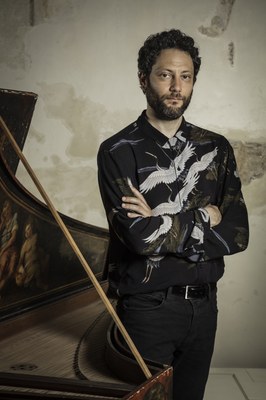Clavichords, spinets and harpsichords. Walking through the rooms of the International Music Museum or admiring the instruments in the Tagliavini collection in Bologna, one seems to hear the echoing melodies of Mozart or a “toccata and fugue” by Bach.... Many instruments in the museum collections, however, cannot be played because they are fragile or missing parts. What if it were possible to revive their magical sound, albeit virtually? This is the compelling promise made by Michele Ducceschi, lecturer in the Department of Industrial Engineering and contact person for the European ERC NEMUS project set up for this purpose.
 What are the contents and goals of the NEMUS research project?
What are the contents and goals of the NEMUS research project?
NEMUS aims to create virtual instruments, copies of ancient specimens, to be played through the computer. To do this, mathematical methods will be developed to simulate the sound of non-playing museum instruments, in particular clavichords.
Through physical modelling, sound engineering can mathematically describe the vibrations generated, for example, by strings, and then solve the calculations by computer so as to generate an audio signal.
What are the elements that make this research particularly innovative in terms of content and method?
Musical instruments are very complex systems, made up of many components, and the sensitivity of the human ear is such that it can perceive differences between two virtually identical instruments.
The real challenge of NEMUS is to find mathematical models that lead to a satisfying sound and that at the same time can be solved by the computer in real time, so that virtual instruments can be played, from home or in the studio. The strength of NEMUS is that it requires skills spanning very different disciplines, from mathematics to musicology. This somewhat outlandish project aims to build solid bridges between the world of computers and the world of historic musical instrument conservation.
What do you see as the benefits to society of the NEMUS project?
If the technology used turned out to be suitable, many museums could adopt it to enhance their heritage. There are many collections of valuable antique, non-playing instruments in the world, including the Tagliavini collection, which forms part of the Genus Bononiae museum network with which we collaborate. Often, instruments cannot be restored because this involves the replacement of parts that are, to all intents and purposes, historical artefacts. In many cases, expensive copies have been built that need continuous maintenance. NEMUS aims to build virtual copies of instruments which are maintenance-free and accessible to everyone: anyone can download a copy of the virtual instrument from the web and play it, reproducing the original sound.
When you heard that the project had won ERC funding, how did you feel? What does this recognition mean for your research path?
I honestly did not expect it! The European Commission decided to take a gamble on me and on this project. I have lived abroad all my adult life and coming back to do research in Italy at the University of Bologna is a challenging and exciting experience.
How far has the NEMUS research project progressed and what results has it achieved so far?
The first step was the mathematical modelling of the strings, which led to an important result: a 350-fold increase in the speed of solving the calculations. Starting in the autumn, the team currently consisting of myself and the PhD student Riccardo Russo, from the Department of Industrial Engineering, will be significantly expanded. This is just the beginning, but we are ready to overcome obstacles and find creative solutions, which is the beauty of our work.
RicERCatori in Evidenza is the column dedicated to the University of Bologna's cutting-edge research funded by the European Research Council-ERC and its protagonists.
